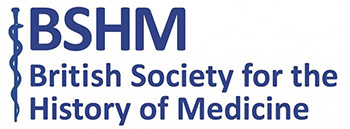
Patients on the balcony of the Bernhard Baron Hospital, Papworth Village Settlement
Royal Papworth Hospital is a leading cardiothoracic hospital and is best known for its trailblazing work in transplantation since performing the UK’s first successful heart transplant in 1979. However, Papworth has a long standing tradition of pioneering work since its inception as a tuberculosis colony, 100 years ago.
At a time when 41,800 in the UK died from tuberculosis, a young Welshman Dr (later Sir) Pendrill Varrier-Jones was appointed Cambridgeshire TB Officer during WWI. Following sanatorium treatment patients would risk a relapse when they returned to the overcrowded, unsanitary and damp conditions which had led to infection in the first instance. Frustrated by this cycle, Varrier-Jones took a holistic approach to care and wanted to develop a combined treatment and rehabilitation facility that would leave patients, “a useful and productive member of society, a man who, though a consumptive, has learned to be a consumptive, to lead the life of a consumptive and even enjoy that life.”
Having successfully established treatment for a small number of patients in 1916 in the nearby village of Bourn, Varrier-Jones’ vision went through a process of rapid expansion. Papworth Hall was purchased following a large charitable donation in 1917 with the first patients arriving on 12 February 1918. Patients were prescribed bed rest, a hearty diet and ample fresh air. Once the patient’s condition had improved they were moved onto graduated work within one of the light industries and provisions were available for family members to also settle in the village. Sir Varrier-Jones’ revolutionary aim was to treat the “whole-person,” by providing treatment, suitable employment and allowing patients a home life.
With the discovery of streptomycin in the 1940s, the number of TB patients declined and what was then known as the Papworth Village Settlement opened its remit to include people with other disabilities. This led to the creation of the Papworth Trust, a charity which continues to support disabled people. In 1948, the hospital officially became part of the NHS and became known as Papworth Hospital which moved from the treatment of TB to specialise in chest medicine.
2018 is an important next chapter for us. It’s the year when we become Royal Papworth Hospital, commemorate our centenary, celebrate the 70th anniversary of the NHS, and move from the village of Papworth Everard to our new state-of-the-art hospital located in the Cambridge Biomedical Campus. We’ve made a film to commemorate with the support of the Heritage Lottery Fund (for trailer click here) with the first screening coinciding with the NHS’ 70th birthday on 5th July at the Cambridge Arts Picturehouse, this will be followed by screenings in the village of Papworth Everard on 21st July (to book click here) with additional screenings planned for the autumn. This film and screenings were made possible with a generous grant from the Heritage Lottery Fund and the Papworth Hospital Charity
Nico Ferguson, Heritage Assistant
Royal Papworth Hospital NHS Foundation Trust






